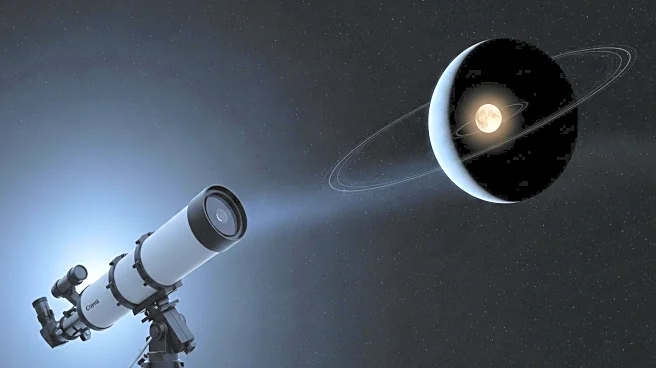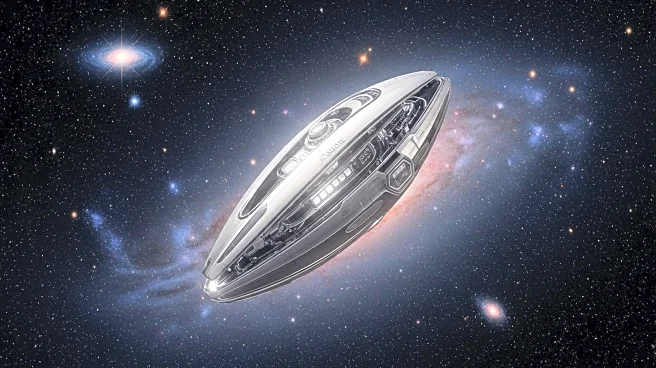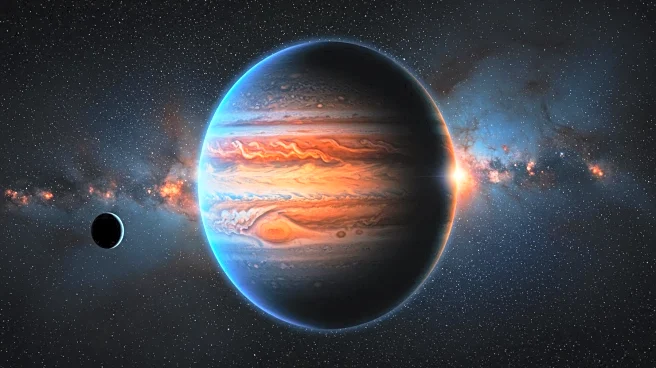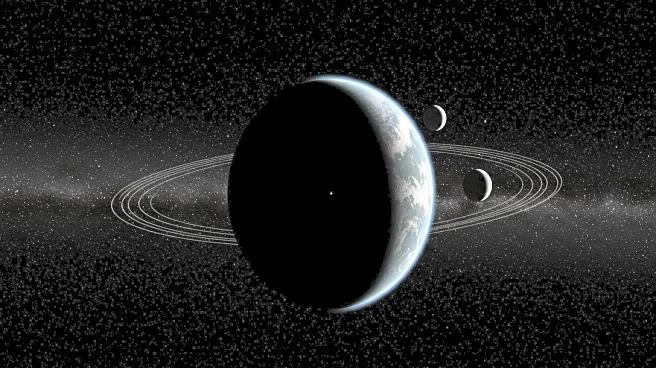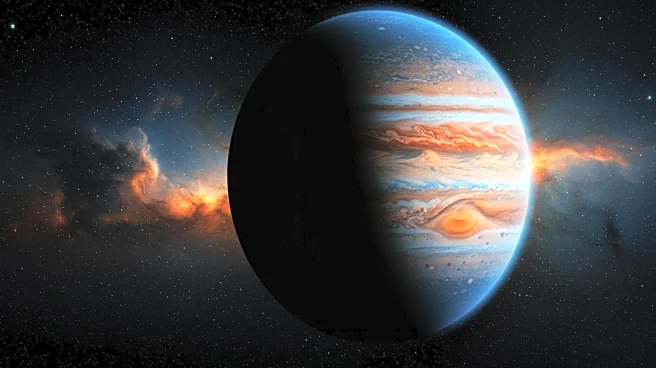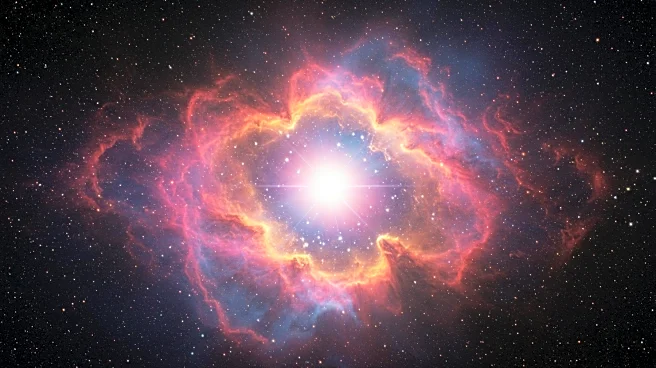What's Happening?
Researchers from Tel Aviv University have identified a giant exoplanet, GJ 2126 b, located 124 light years away from Earth. This planet exhibits a highly eccentric orbit, with an eccentricity of 0.85, circling its host star every 272.7 days. The planet's minimum mass is estimated to be about 1.3 times that of Jupiter, and it orbits at a distance of approximately 0.71 astronomical units from its star. The discovery was made using 112 radial velocity measurements from the HARPS spectrograph, which allows astronomers to detect the tiny wobble of stars caused by orbiting planets. The host star is a cool, low-mass M-dwarf with high metal content, making it a suitable candidate for follow-up studies.
Why It's Important?
The discovery of GJ 2126 b is significant as it challenges existing models of planetary formation and dynamics. The extreme eccentricity of its orbit suggests a chaotic past, possibly involving gravitational interactions with other massive bodies. Understanding such systems can provide insights into the processes that lead to the formation of giant planets and their subsequent orbital evolution. This research also highlights the importance of public datasets like HARPS-RVBank, which enable independent teams to test hypotheses and uncover new astronomical phenomena. The findings could influence future studies on planetary atmospheres and temperature variations due to orbital eccentricity.
What's Next?
Further research is needed to determine the true mass and radius of GJ 2126 b, as no transit has been observed yet. Future velocity campaigns may reveal subtle variations indicating the presence of additional companions. Continued astrometric monitoring could refine mass constraints and test for secular changes hinting at other bodies or tidal effects. Thermal measurements and reflected-light studies, although challenging, could be possible with future facilities, especially during the planet's close approach near periastron. These efforts will help settle the mass question and explore the possibility of the planet being a brown dwarf.


